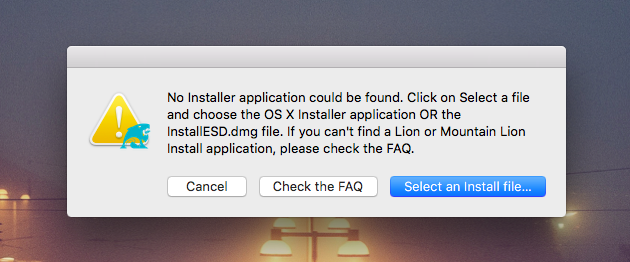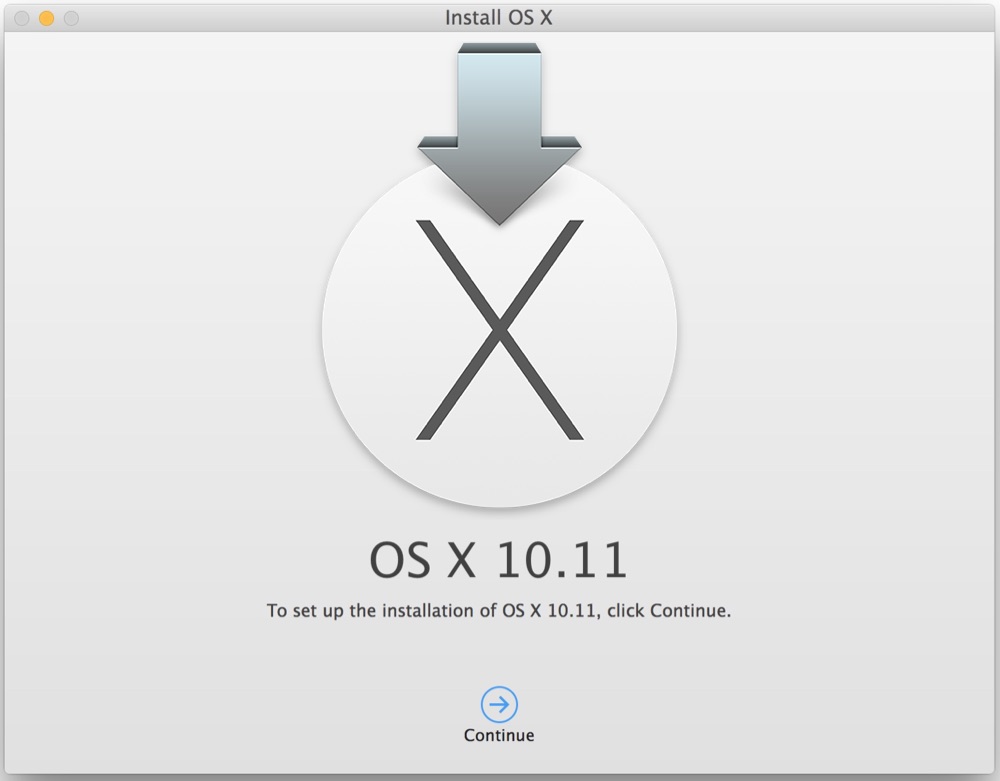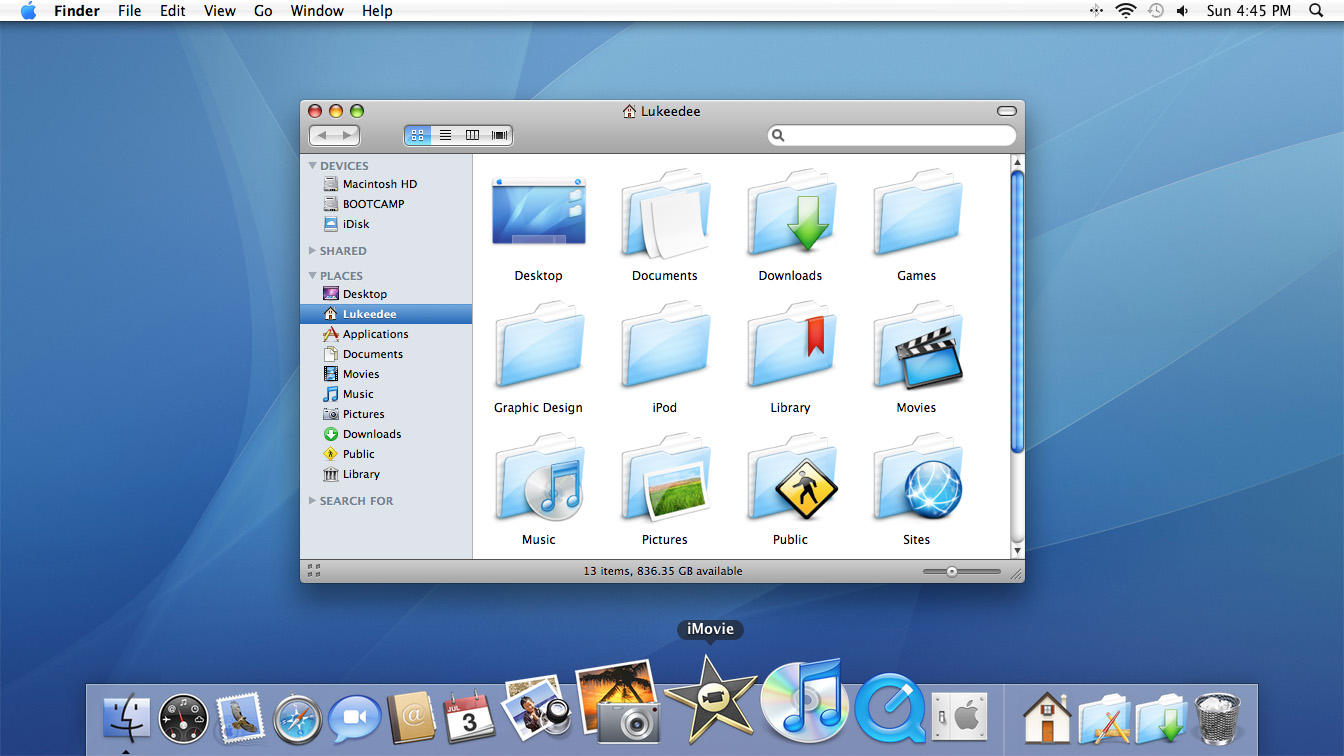Apple has now made the El Capitan file from their website into a.dmg file. In order to use this file to create a bootable drive, you must do these steps before you are able to use the createinstallmedia command. Step 1: Obtain the El Capitan file from Apple as mentioned above. Step 2: Run and mount the InstallMacOSX.DMG file. Os X El Capitan 10.11.0 Bootable Usb Dmg Files ISO document is the copy or file record that contains every one of the information of optical plate-like CD or DVD. It represents the International Standard Organization.
These advanced steps are primarily for system administrators and others who are familiar with the command line. You don't need a bootable installer to upgrade macOS or reinstall macOS, but it can be useful when you want to install on multiple computers without downloading the installer each time.
- El Capitan Dmg To Usb Windows 10; Download El Capitan Dmg; INSTRUCTION Run, DiskMaker X, then.choose El Capitan (10.11). Next, choose Use another Copy. Double click on El Capitan.DMG to mount it, then borrow the El Capitan.app OS X El Capitan DMG.png. Choose An 8GB USB thumb drive. Select the USB volume name, then select Choose this disk.
- First, a USB drive with at least 16 GB storage as the installation file of EI Capitan (.dmg) is over 5.5GB. USB 3.0 is more recommended as it has faster reading and writing speed. This will save a lot of time. Secondly, download EI Capitan (10.11.6) DMG file from this link: This is the modified version of Apple's dmg file dedicated for USB booting.
- As has been the case for the last few releases of OS X, the easiest method to make a USB install drive is with the free program, Diskmaker X. It’s been updated today to support El Capitan.
What you need to create a bootable installer
- A USB flash drive or other secondary volume formatted as Mac OS Extended, with at least 14GB of available storage
- A downloaded installer for macOS Big Sur, Catalina, Mojave, High Sierra, or El Capitan
Download macOS
- Download: macOS Big Sur, macOS Catalina, macOS Mojave, or macOS High Sierra
These download to your Applications folder as an app named Install macOS [version name]. If the installer opens after downloading, quit it without continuing installation. To get the correct installer, download from a Mac that is using macOS Sierra 10.12.5 or later, or El Capitan 10.11.6. Enterprise administrators, please download from Apple, not a locally hosted software-update server. - Download: OS X El Capitan
This downloads as a disk image named InstallMacOSX.dmg. On a Mac that is compatible with El Capitan, open the disk image and run the installer within, named InstallMacOSX.pkg. It installs an app named Install OS X El Capitan into your Applications folder. You will create the bootable installer from this app, not from the disk image or .pkg installer.
Use the 'createinstallmedia' command in Terminal
- Connect the USB flash drive or other volume that you're using for the bootable installer.
- Open Terminal, which is in the Utilities folder of your Applications folder.
- Type or paste one of the following commands in Terminal. These assume that the installer is in your Applications folder, and MyVolume is the name of the USB flash drive or other volume you're using. If it has a different name, replace
MyVolumein these commands with the name of your volume.
Big Sur:*
Catalina:*
Mojave:*
High Sierra:*
El Capitan:
* If your Mac is using macOS Sierra or earlier, include the --applicationpath argument and installer path, similar to the way this is done in the command for El Capitan.
After typing the command:
- Press Return to enter the command.
- When prompted, type your administrator password and press Return again. Terminal doesn't show any characters as you type your password.
- When prompted, type
Yto confirm that you want to erase the volume, then press Return. Terminal shows the progress as the volume is erased. - After the volume is erased, you may see an alert that Terminal would like to access files on a removable volume. Click OK to allow the copy to proceed.
- When Terminal says that it's done, the volume will have the same name as the installer you downloaded, such as Install macOS Big Sur. You can now quit Terminal and eject the volume.
Use the bootable installer
Determine whether you're using a Mac with Apple silicon, then follow the appropriate steps:
Apple silicon

- Plug the bootable installer into a Mac that is connected to the internet and compatible with the version of macOS you're installing.
- Turn on your Mac and continue to hold the power button until you see the startup options window, which shows your bootable volumes.
- Select the volume containing the bootable installer, then click Continue.
- When the macOS installer opens, follow the onscreen instructions.
Intel processor

- Plug the bootable installer into a Mac that is connected to the internet and compatible with the version of macOS you're installing.
- Press and hold the Option (Alt) ⌥ key immediately after turning on or restarting your Mac.
- Release the Option key when you see a dark screen showing your bootable volumes.
- Select the volume containing the bootable installer. Then click the up arrow or press Return.
If you can't start up from the bootable installer, make sure that the External Boot setting in Startup Security Utility is set to allow booting from external media. - Choose your language, if prompted.
- Select Install macOS (or Install OS X) from the Utilities window, then click Continue and follow the onscreen instructions.
Learn more
A bootable installer doesn't download macOS from the internet, but it does require an internet connection to get firmware and other information specific to the Mac model.
For information about the createinstallmedia command and the arguments you can use with it, make sure that the macOS installer is in your Applications folder, then enter the appropriate path in Terminal:
El Capitan Usb Installer
EI Capitan (10.11) is the last release of OS X. After it, the OS versions are under a name called macOS. From our observation, there are still many people using EI Capitan on their Mac as some of the apps are not running on macOS. Hence, if your Mac was something wrong with it and you need to create a bootable installation media to reinstall OS X EI Capitan on your Mac. Honestly speaking, it is a tough process for EI Capitan and you might receive errors when using the dmg file downloaded from Apple website.
Please don't worry. In this tutorial, we will share you all the necessary steps to make a bootable EI Capitan bootable USB on a Windows 10 PC. Here is a screenshot of our tutorial's output.
P.S. If you have a Mac, then please follow this official guide to create EI Capitan USB installer on macOS by using createinstallmedia command: https://support.apple.com/en-us/HT201372
sudo /Applications/Install OS X El Capitan.app/Contents/Resources/createinstallmedia --volume /Volumes/USBVolume --applicationpath /Applications/Install OS X El Capitan.app
Preparation
Please get started, there are a few things you should prepare for.
First, a USB drive with at least 16 GB storage as the installation file of EI Capitan (.dmg) is over 5.5GB. USB 3.0 is more recommended as it has faster reading and writing speed. This will save a lot of time.
Secondly, download EI Capitan (10.11.6) DMG file from this link: This is the modified version of Apple's dmg file dedicated for USB booting.
Warning: The download file hosted on Apple.com (InstallMacOSX.dmg) will only work on Mac platform. For creating installation media on Windows, please use the above link instead. The dmg file provided by Apple contains a .pkg file in DMG archive, which will result failure if you are using it on a PC.
Tutorial: How to Create EI Capitan Bootable USB on Windows 10 PC
To make a bootable USB from EI Capitan dmg file, we need a special software in place. In our case, it is UUByte DMG Editor, an award-winning app for creating bootable OS X and macOS USB installer.
Step 1: Install UUByte DMG Editor on your PC and open it from Desktop shortcut. After that, plug in a USB drive into the computer and eject other unused USB devices.
Step 2: Click Burn button from welcome screen and import downloaded EI Capitan DMG file into the program. You will also see USB drive name in second field.
Step 3: Click Burn button at the bottom to write dmg file to USB drive. There is a progress bar on the screen. This tells how much time left for the burning task.
Step 4: Wait for 5-10 minutes and a bootable EI Capitan installation disk is created. You need to wait more time for USB 2.0 device.
Install OS X EI Capitan on Your Mac
Before installation starts, make sure the hardware meets the minimal requirements of EI Capitan. You can check it from here: https://support.apple.com/kb/SP728?locale=en_US
El Capitan Dmg To Usb Driver
To install EI Capitan from USB, please insert the bootable disk into Mac. Keep pressing Option button during startup. You will see a drive name (Install OS X EI Capitan) on startup window. Click on it to enter into OS X Recovery mode.
From macOS Utitilies window, click Reinstall macOS and follow the screen prompt to install EI Capitan on your Mac.

El Capitan Installesd.dmg To Usb
The above is a complete tutorial that shows you how to easily create a bootable USB installer from EI Capitan DMG file on a Windows PC. And this is the easiest method you could find. No complex settings and command line!